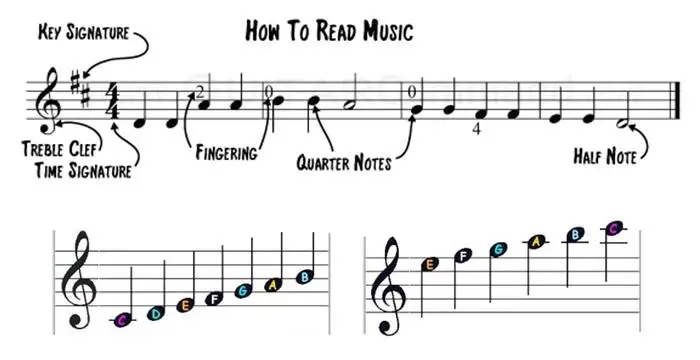
A chord progression is a series of musical chords used while playing any song or piece of music. Most beginners who are learning to play chords, or already know a few chords, wonder how to use them practically. Most of them are not sure which chord follows the other. Here we also take a look at common progressions.
Common Chord Progressions
Beginners should learn how to use chords in the right manner if they want to progress further with their piano playing! It doesn’t make sense to use a instrument with so many keys if you’r only going to play the melody; you might as well learn to harmonize the melody notes by using proper chords, and progressing smoothly to other chords.
Here are some common progressions that you can use right away!
- IV – V – I
- II – V – I
- I – V – VI – IV
The key note (tonic) is denoted as note number one, the first step of the ascending scale. Chords built on each scale degree are numbered in the same way so that, for example, in the key of C, the chord progression E minor – F – G can be generally described as a three – four – five (III – IV – V) progression.
Which Piano/Guitar Chord Comes Next?
Is there any easy way to know which piano chord to use, or which chord to play next while playing a song?
Here’s a technique that works most of the time.
We learnt about PRIMARY CHORDS (I, IV and V chords); these are used more frequently than other chords, and you’re more likely to use them to play a song.
So, if you’re playing in the Key of C, the first chord usually will be the C chord. That leaves us with the F chord and the G chord, which are the other primary chords (see, we have already narrowed down to two chords).
So, how do your choose between the F or G chord? Here’s another simple method (though this is not a hard-and-fast rule).
For example, if the melody note is “B”, then the chord is probably a G chord. Why? Because the “B” note appears in the G chord, but its NOT there in the F chord.
Similarly, if the melody note is “A”, than I would use the F chord. Why? Because the “A” note is present in the F chord, but its NOT present in the G chord.
Useful Resources
While there are several books out there, here a a few resources that I would like to recommend:
- [easyazon_link identifier=”0634021427″ locale=”US” tag=”keytarhq04-20″ cart=”n”]The Chord Wheel: The Ultimate Tool for All Musicians[/easyazon_link] that demonstrates practical applications of chords.
- [easyazon_link identifier=”B00FBBNJ56″ locale=”US” tag=”keytarhq04-20″ cart=”n”]How to play piano despite years oflessons[/easyazon_link]
Music Theory
I hope you already know about the basics of Music Theory if you’re reading on this topic. However, if that’s not the case you may want to brush up on your music theory skills – pitches and scales, intervals, clefs, rhythm, meter, basic harmony, and more.
Want to read more on music theory? Looking for a refresher course?
You can spend some time reading on Music Theory here.
Closing Thoughts
As you can see, you really don’t need to learn lot of chords and chord progressions to harmonize songs. The practical examples above shows how to use those three chords, and there are literally hundreds of songs that are made of these three primary chords.
Useful Read
Easy Piano Lessons
KeytarHQ editorial team includes musicians who write and review products for pianists, keyboardists, guitarists & other musicians. KeytarHQ is the best online resource for information on keyboards, pianos, synths, keytars, guitars and music gear for musicians of all abilities, ages and interests.



Leave a Reply